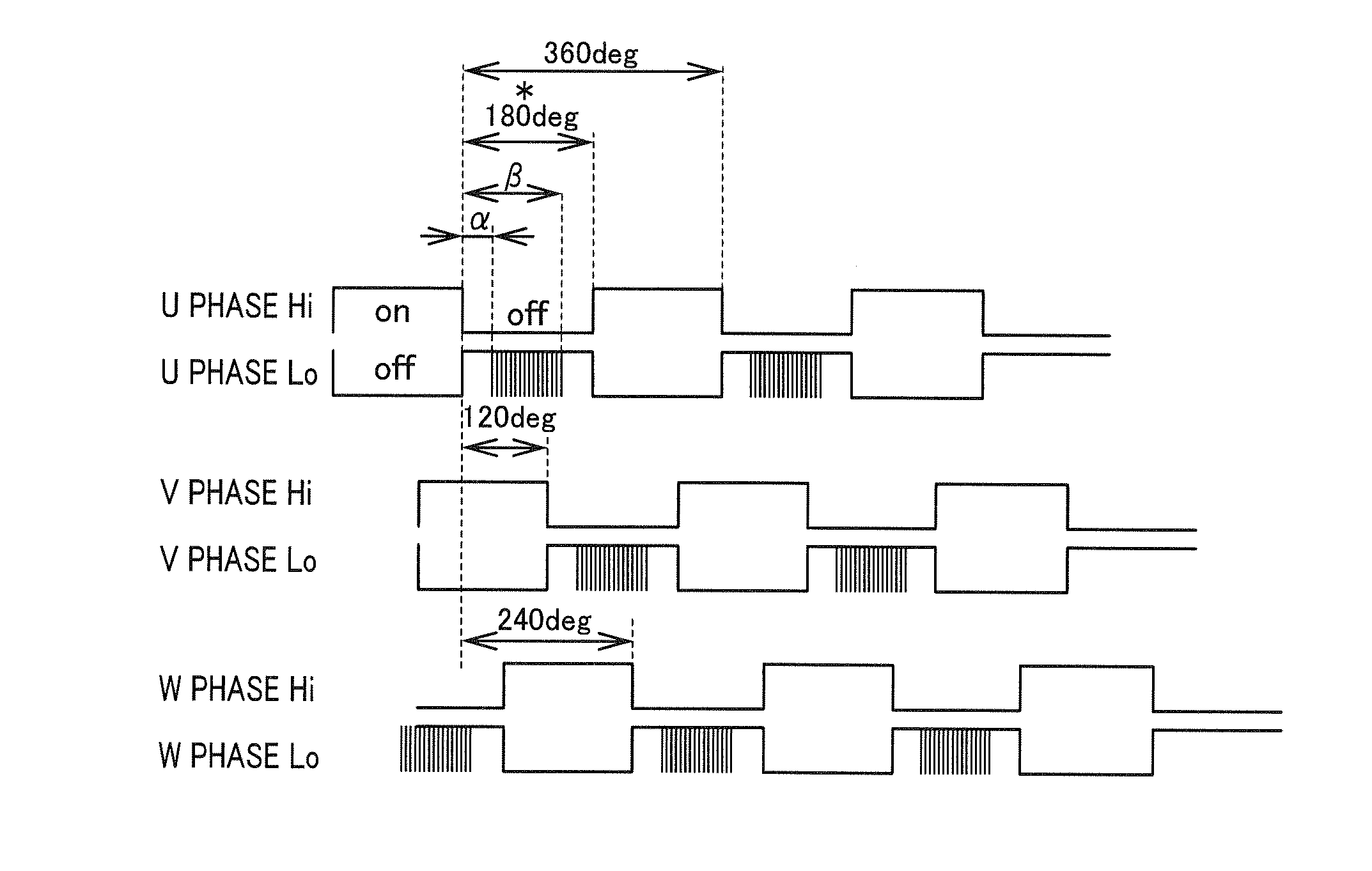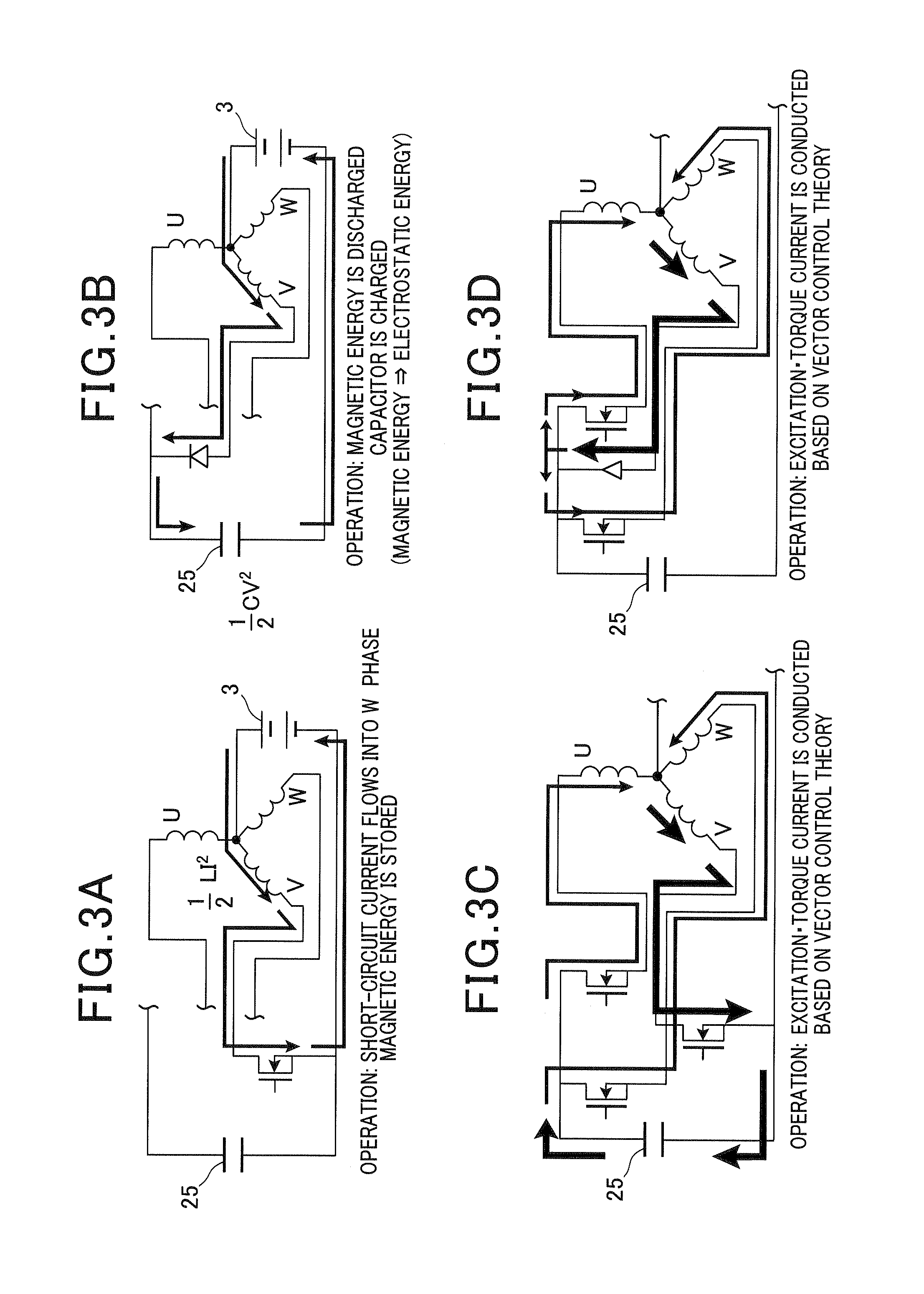Control apparatus for motor-generator
a control apparatus and motor technology, applied in the direction of dynamo-electric machines, synchronous motor starters, electric variable regulation, etc., can solve the problems of lowering system efficiency, reducing and the driving method is not suitable for use, so as to simplify the magnetic pole position sensor, reduce the cost of operation, and improve the efficiency of the system
- Summary
- Abstract
- Description
- Claims
- Application Information
AI Technical Summary
Benefits of technology
Problems solved by technology
Method used
Image
Examples
first embodiment
[0021]FIG. 1 shows a configuration of the first embodiment. A motor-generator 1 includes a stator 11 and a rotor 12. The rotor 12 may be a permanent magnet type, a wound-field type, or a cage-type inductor. The rotor 12 may have a magnetic salient-pole type reluctance structure which has no coil and no magnet.
[0022]The stator 11 is provided with three-phase coils which are connected so as to form a star shape. Ends of the three-phase coils are connected at a neutral point 13. The other ends of the three-phase coils are connected to an inverter 2.
[0023]In the inverter 2, a switch element 21 and a free wheeling element 22 form one arm. The same two arm formations are connected in series. Three of the serial connections are arranged in parallel.
[0024]If the switch element 21 and the free wheeling element 22 are configured by a MOSFET (metal-oxide semiconductor field-effect transistor) and a parasitic diode parasitizing to the MOSFET, mass-produced general-purpose devices can be used. H...
second embodiment
[0037]In the second embodiment, the positive electrode of the DC power supply 3 is connected to the DC positive electrode terminal 23 of the inverter 2. The negative electrode of the DC power supply 3 is connected to the neutral point 13 of the star-shaped connection.
[0038]As shown in FIG. 5, according to the pattern of control, the high-side switch is subject to the PWM control during the period of time during which the low-side switch is in an off-state. Designating the off time point of the low-side switch as a starting point, a and p are defined so as to meet “β-α≧120 degrees”, “α>0 degrees”, and “β180 degrees”.
[0039]The operation of the second embodiment is similar to the operation shown in FIGS. 3A to 3D, in which the capacitor 25 is charged via a low-side free wheeling diode.
[0040]As shown in FIG. 10, the control of the above embodiment can increase the driving rotating speed to about twice that of the conventional control which does not increase voltage, even though a dedica...
PUM
 Login to View More
Login to View More Abstract
Description
Claims
Application Information
 Login to View More
Login to View More - R&D
- Intellectual Property
- Life Sciences
- Materials
- Tech Scout
- Unparalleled Data Quality
- Higher Quality Content
- 60% Fewer Hallucinations
Browse by: Latest US Patents, China's latest patents, Technical Efficacy Thesaurus, Application Domain, Technology Topic, Popular Technical Reports.
© 2025 PatSnap. All rights reserved.Legal|Privacy policy|Modern Slavery Act Transparency Statement|Sitemap|About US| Contact US: help@patsnap.com



